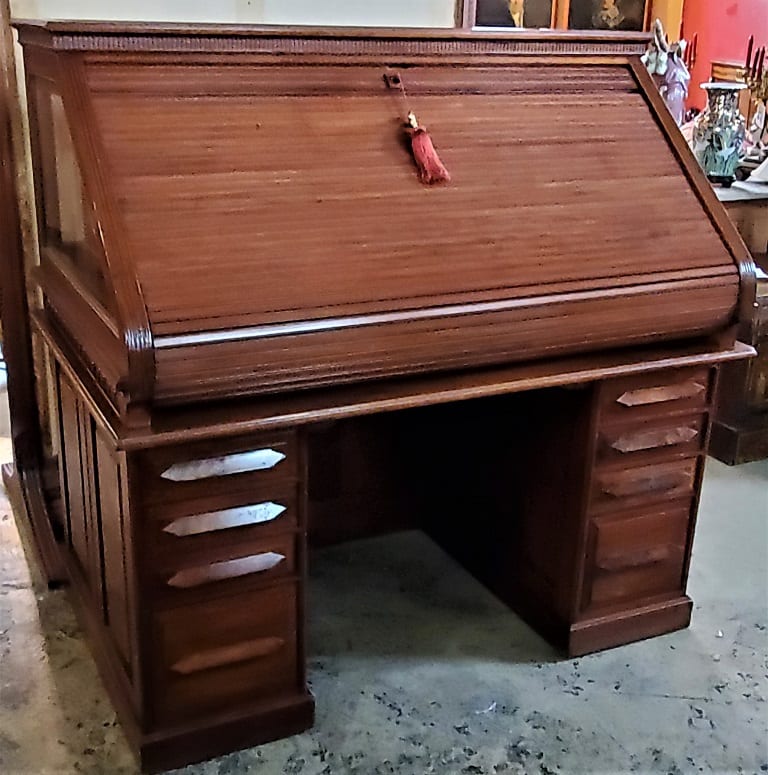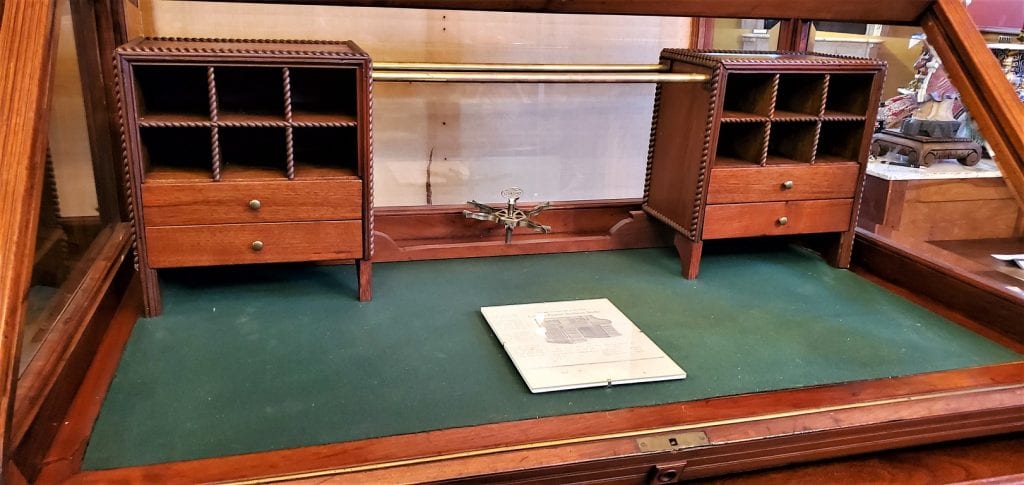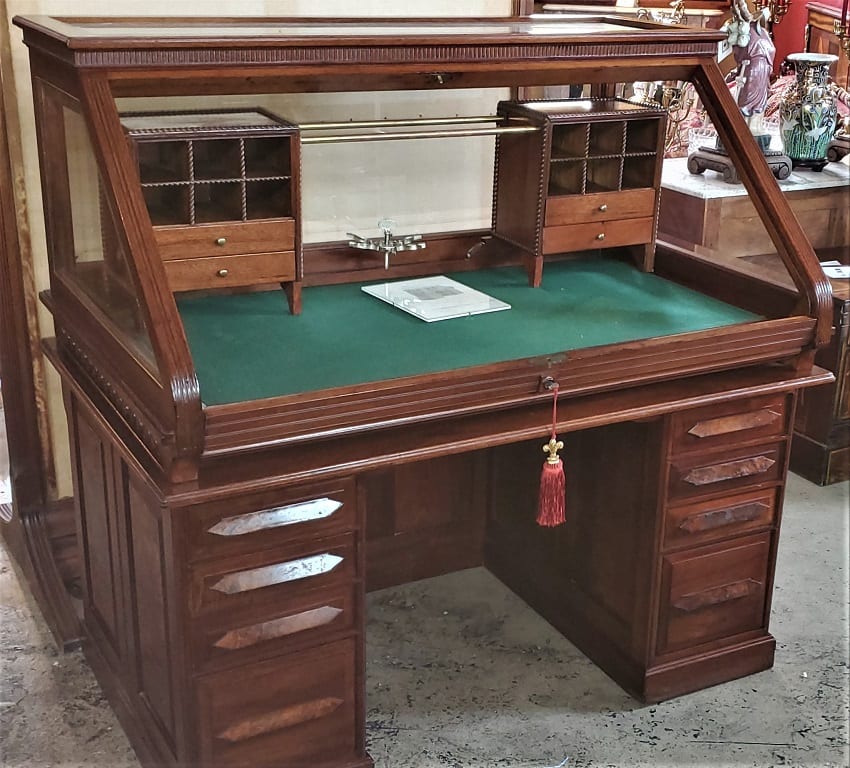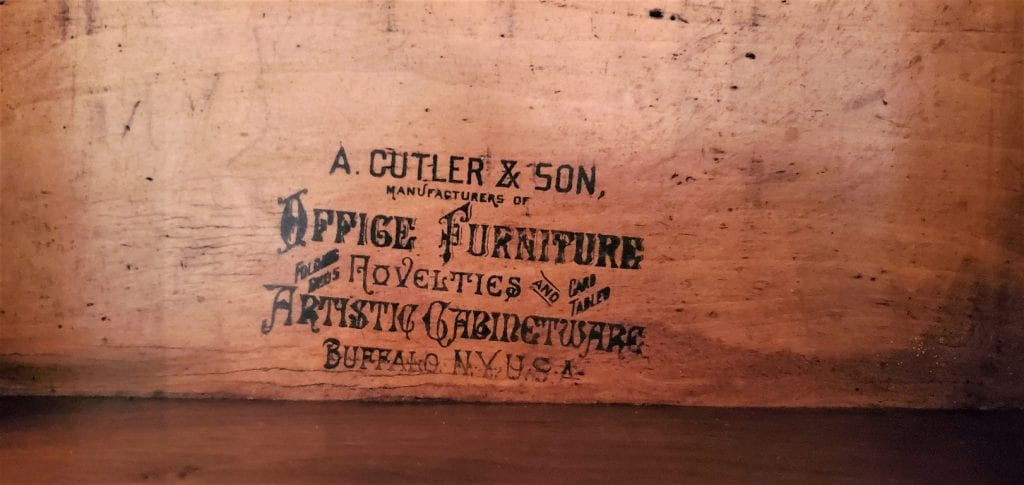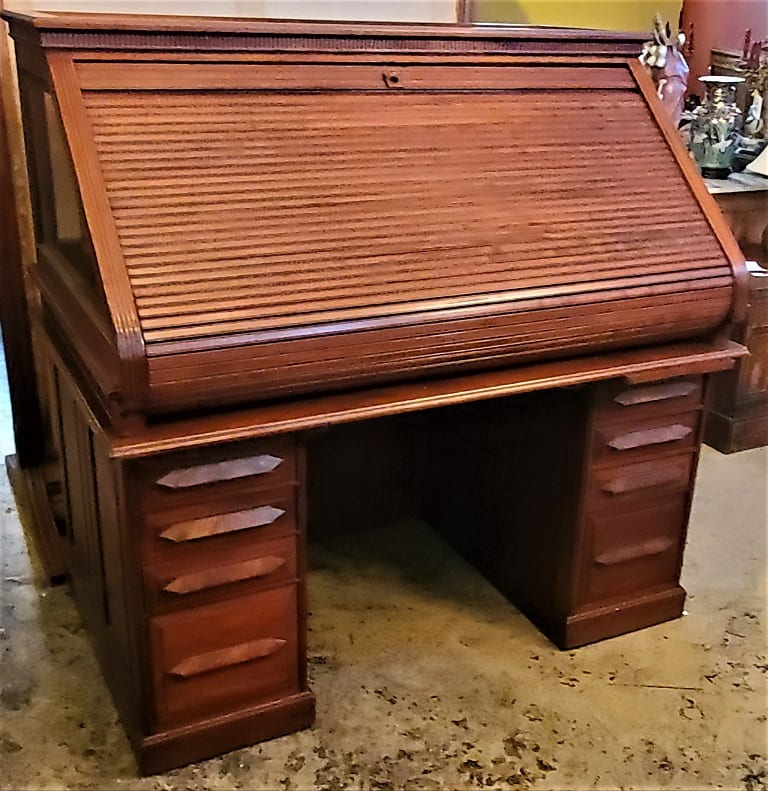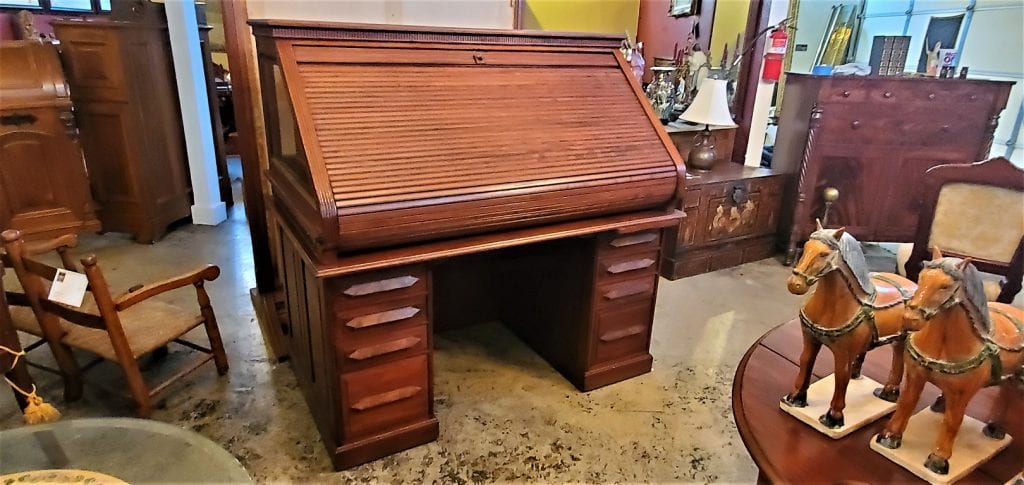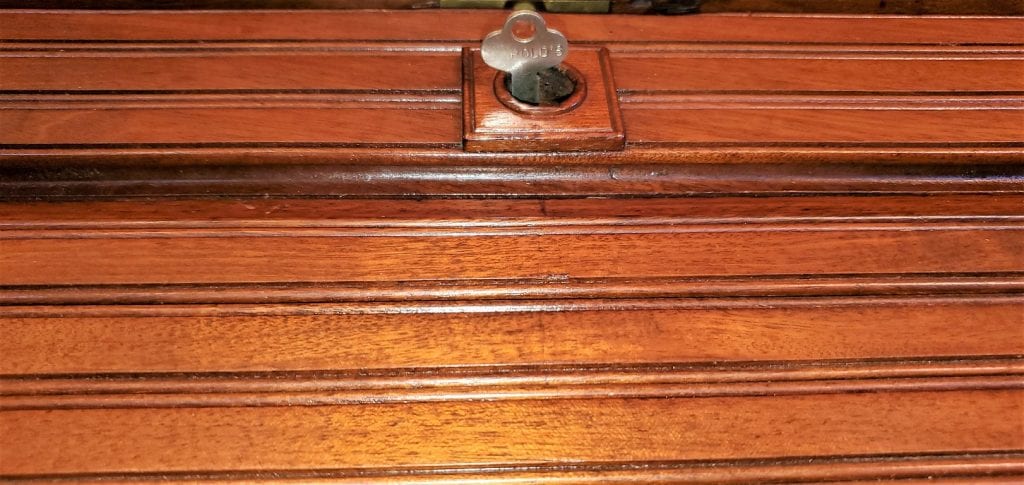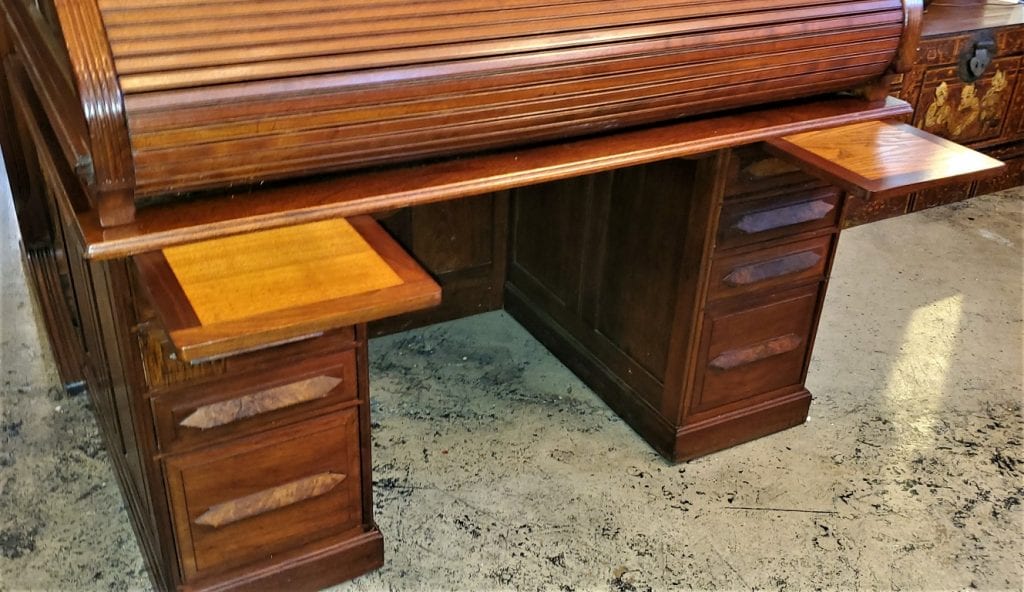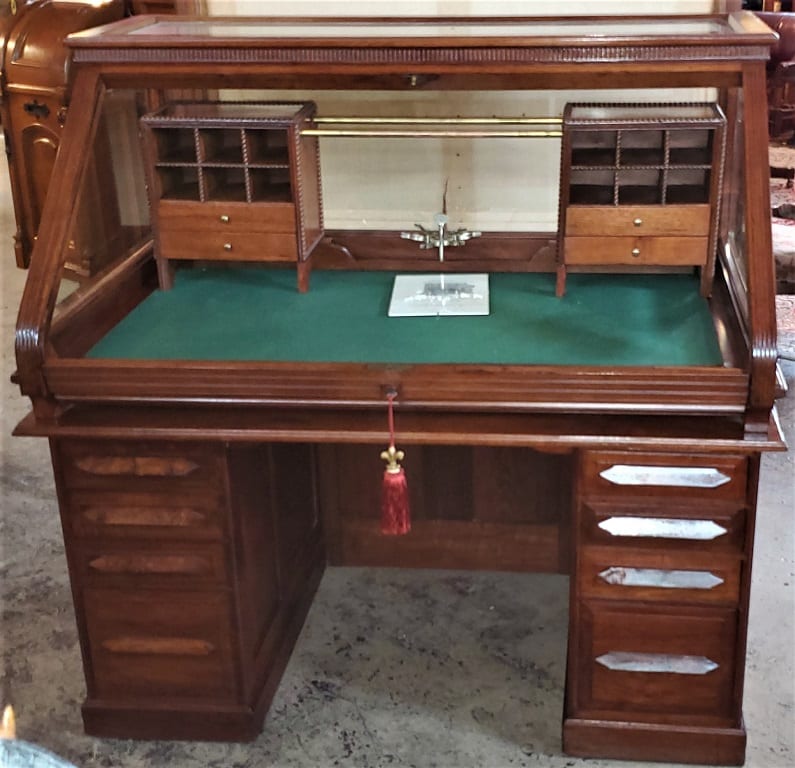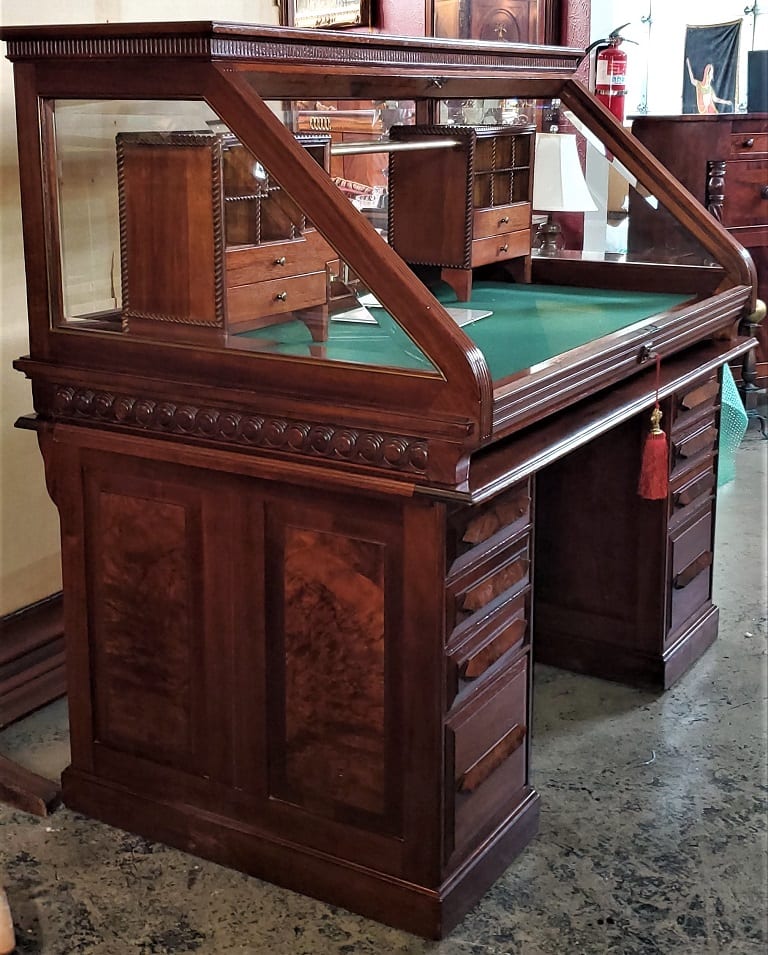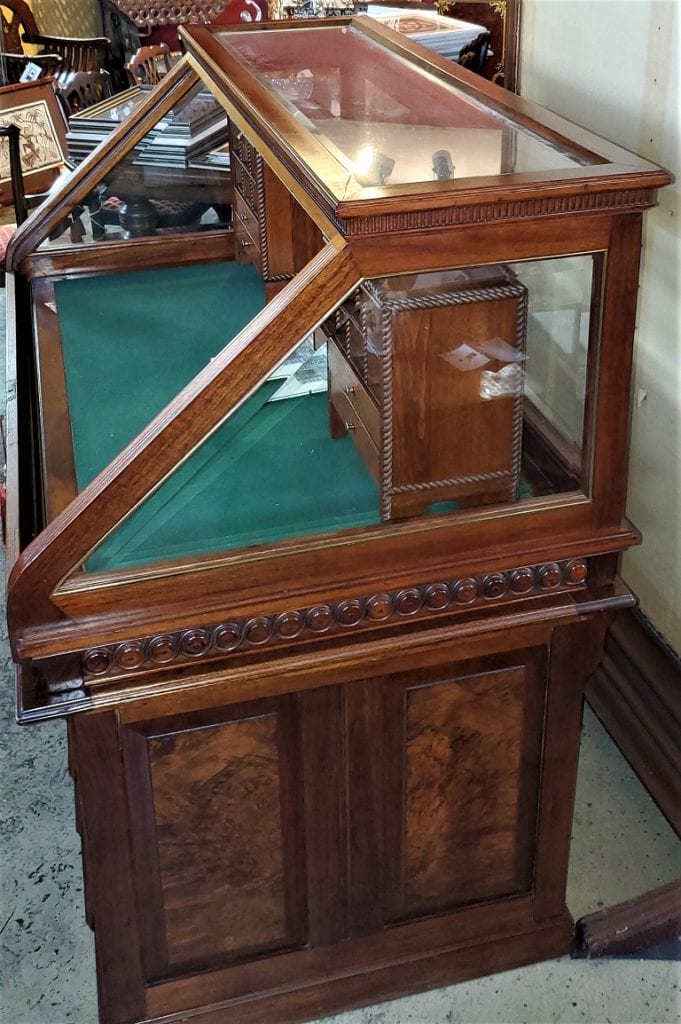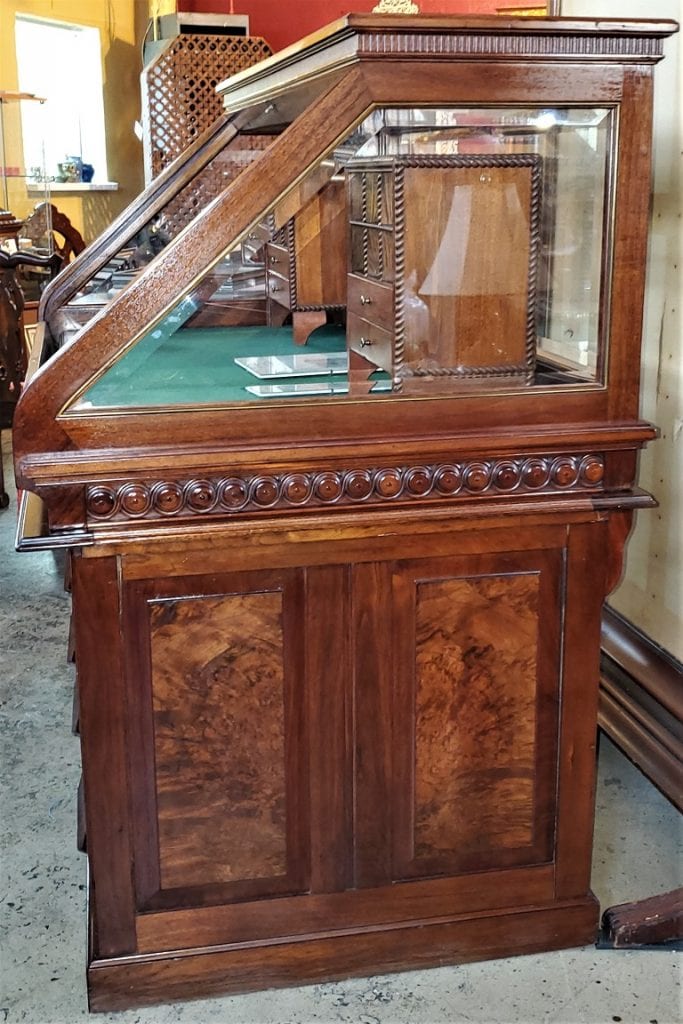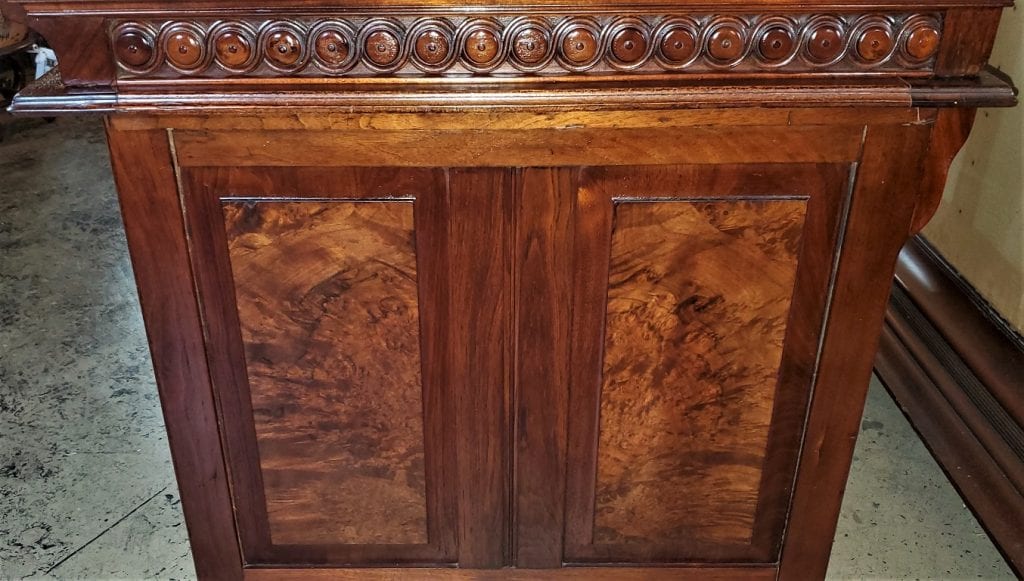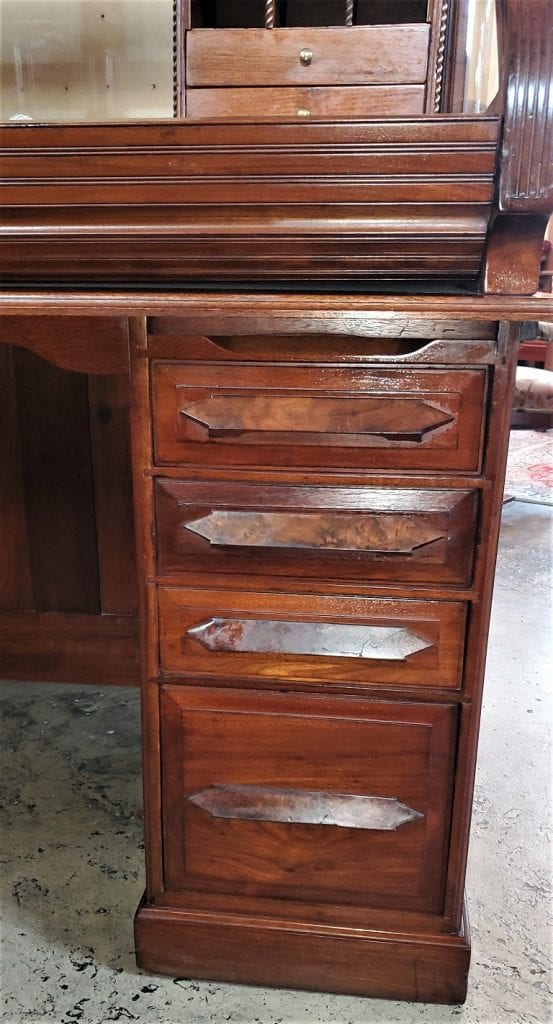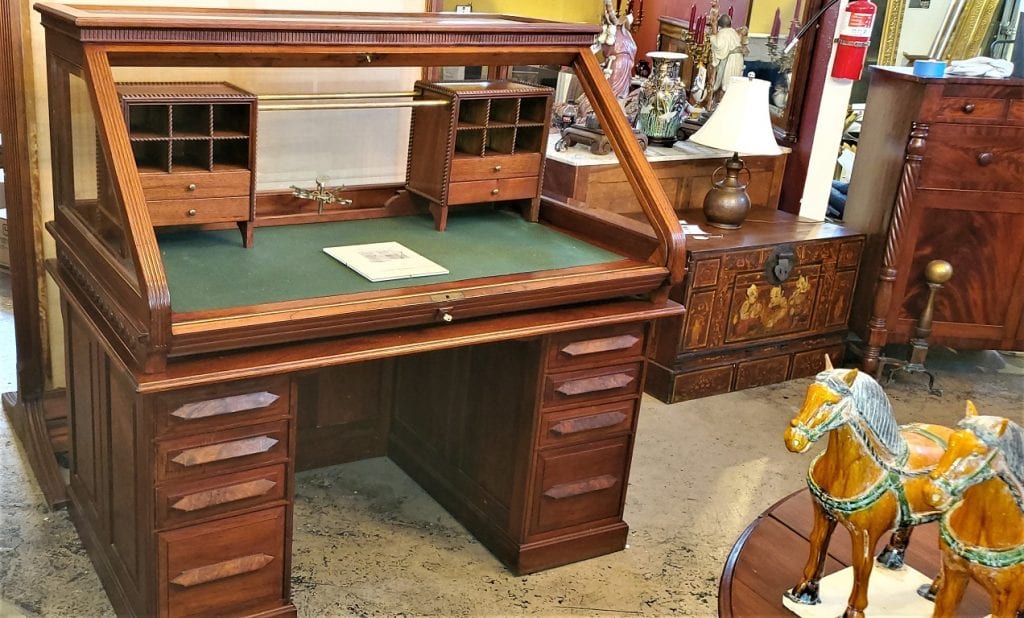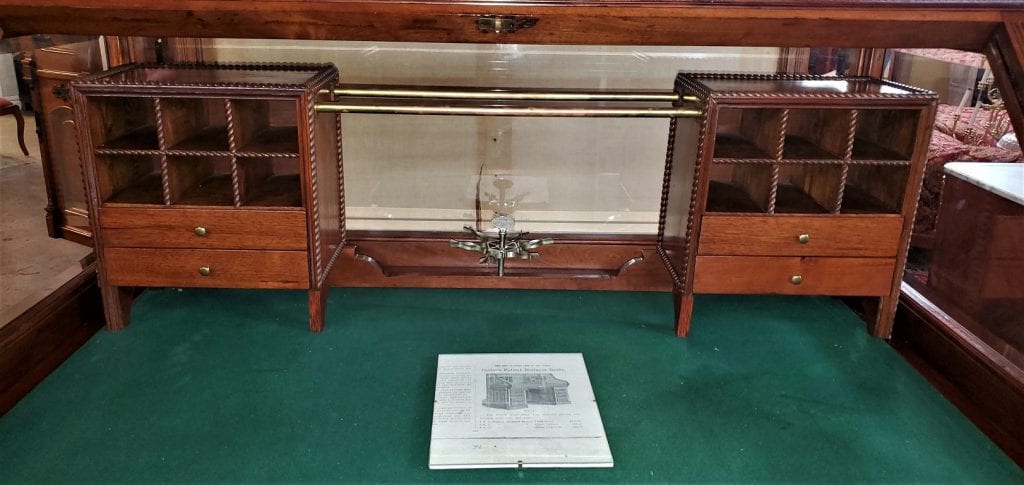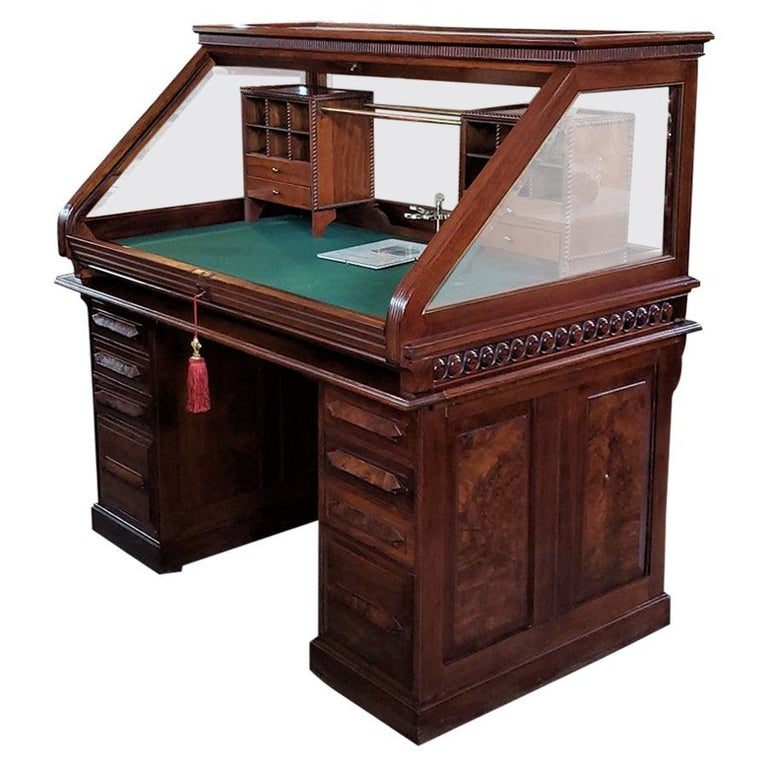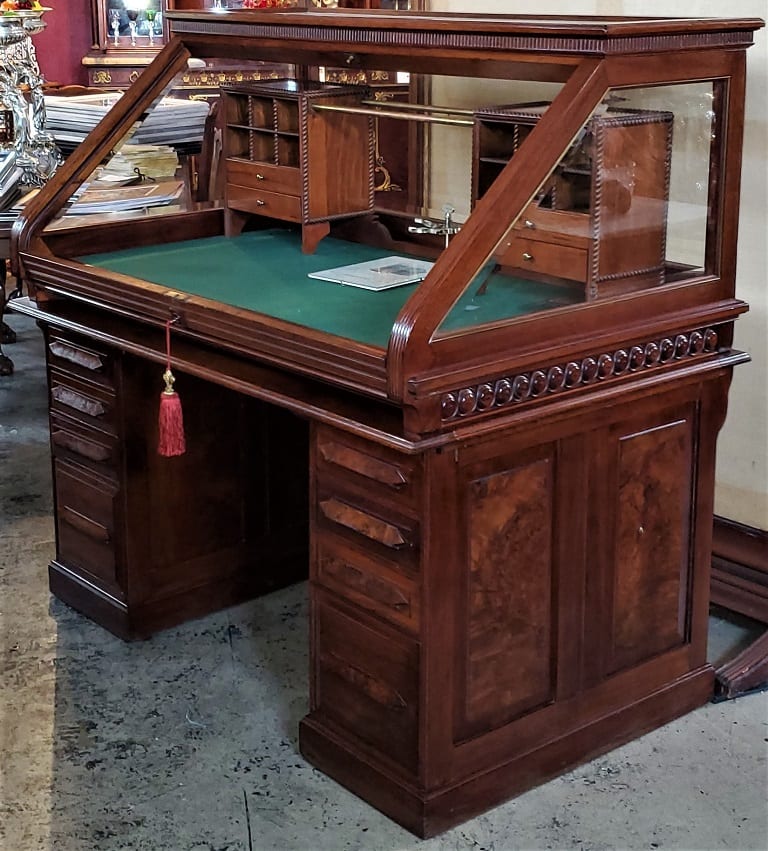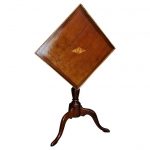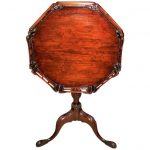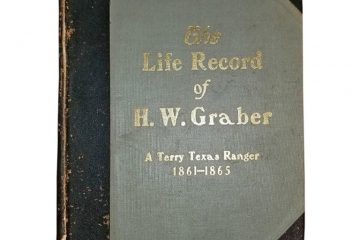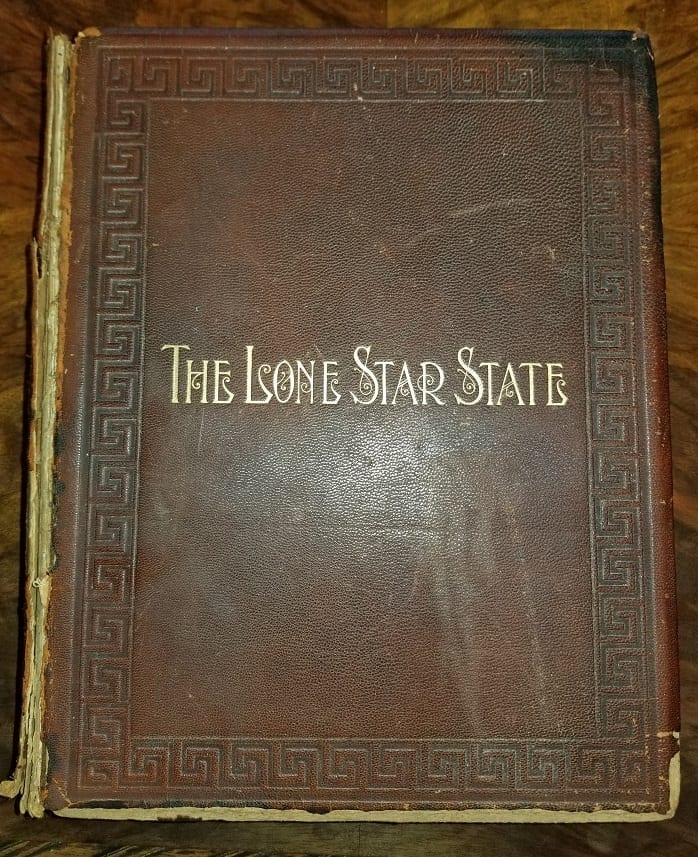19C American Cutler & Sons Model 1 Roll Top Desk
PRESENTING a GLORIOUS PIECE OF AMERICANA namely, a 19C American Cutler & Sons ‘Model 1’ Roll Top Desk.
This is the prototype of the well known Cutler & Sons Patented Desk and could very possibly be the Exhibition piece for the Centennial Exhibition in Philadelphia in 1876.
Known as ‘Model No 1’, this desk was one of the very first model desks made by Cutler to show off its recently patented roll top or cylinder fronted desk with the front of the desk folding under the desk section.
You will see the marketing brochure (with the photos) wherein this desk is called “The Best Cylinder Desk in the World. Cutler’s Patent Business Desks. No 1. Full French Plate Glass Top, elegantly paneled and veneered front, ends and back.” The pricing is noted thereon as $162.
Made of a combination of walnut with gorgeous burl walnut panels. Stunning swirl molding detail, to the back and sides.
The French plate glass panels are all original with beveled edges.
The removeable interior shelving consists of 12 cubbies with 4 drawers attached by 2 brass rods and a central brass carousel clip holder with the word ‘Standard’.
The desk is lined with green felt or baize.
The base section consists of 2 pull out writing panels and 4 drawers on either pillar. 3 small and one larger one to the bottom. The drawers are full marked (see photos).
FANTASTIC detail throughout and in great condition for it’s age.
The reason we believe that this could easily have been one of the desks, Cutler exhibited in Philadelphia in 1876, is because it is one of their VERY RARE Model Number 1 desks and the detail and quality is what one would expect in an exhibition piece. The glass panels on all sides and on the top are clearly designed so that one can still view the interior with the desk front up. What better way to show off or exhibit your newly patented roll top mechanism ?
The Centennial International Exhibition of 1876, the first official World’s Fair to be held in the United States, was held in Philadelphia, Pennsylvania, from May 10 to November 10, 1876, to celebrate the 100th anniversary of the signing of the Declaration of Independence in Philadelphia. Officially named the International Exhibition of Arts, Manufactures, and Products of the Soil and Mine, it was held in Fairmount Park along the Schuylkill River on fairgrounds designed by Herman J. Schwarzmann. Nearly 10 million visitors attended the exposition, and 37 countries participated in it.
The Great Central Fair on Logan Square in Philadelphia, Pennsylvania, in 1864 (also known as the Great Sanitary Fair), was one of the many sanitary fairs held during the Civil War. They provided a creative and communal means for ordinary citizens to promote the welfare of Union soldiers and dedicate themselves to the survival of the nation, and the Great Central Fair bolstered Philadelphia’s role as a vital center in the Union war effort. It anticipated the combination of public, private, and commercial investments that were necessary to mount the Centennial Exposition. Both had a similar neo-Gothic appearance, the waving flags, the huge central hall, the “curiosities” and relics, handmade and industrial exhibits, and also a visit from the president and his family.
More than 200 buildings were constructed within the Exposition’s grounds, which were surrounded by a fence nearly three miles long.[17] There were five main buildings in the exposition. They were the Main Exhibition Building, Memorial Hall, Machinery Hall, Agricultural Hall, and Horticultural Hall. Apart from these buildings, there were separate buildings for state, federal, foreign, corporate, and public comfort buildings. This strategy of numerous buildings in one exposition set it apart from the previous fairs around the world that had relied exclusively on having one or a few large buildings.
The Centennial Commission sponsored a design competition for the principal buildings, conducted in two rounds; winners of the first round had to have details such as construction cost and time prepared for the runoff on September 20, 1873. After the ten design winners were chosen, it was determined that none of them allowed enough time for construction and limited finances.[citation needed]
The architecture of the exposition mainly consisted of two types of building, traditional masonry monuments and buildings with a structural framework of iron and steel.
Link: https://en.wikipedia.org/wiki/Centennial_Exposition
Abner Cutler & Son were cabinetmakers in Buffalo, New York who started production in the late 1820s. The firm specialised in rolltop desks and was granted seven patents related to the desk’s mechanism. The company was known as ‘Cutler & Son’ by the 1870s and exhibited some desks at the 1876 Philadelphia Centennial Exhibition. By the early 1900s, the firm was known as the ‘Cutler Desk Co.’ In 1930 it was taken over by the Sikes Chair Co., also of Buffalo.[1]
The US Patent Office issued a patent for the first American-made rolltop desk to Abner Cutler of Buffalo, NY in 1882.[2] Similar desks had been seen in the United States and Europe before Cutler’s patent. The cylinder desk was a predecessor of the rolltop, and had been in use in Europe in the 1700s, but warping of the top was common as it was made from a single piece of wood. The tambour desk may also be considered an early rolltop even though the work surface was only partly covered by the top. The rolltop became a standard item of the Victorian office. Cutler’s company flourished until around 1919, when the rolltop design declined in popularity and was replaced by Art Nouveau and Art Deco styles.
Abner Cutler was born at Paris, Oneida County, N. Y., in 1802 and was the sixth child of Joseph and Dothea Judd. He spent his childhood on a farm and when sixteen years old was apprenticed for three years to Silas Sikes, a cabinet maker of Clinton, New York. After this he was employed by Thomas Constantine in New York where he learnt the trade of cabinet-making. From there he worked in Chittenango, New York, and in 1824 started out on his own. He went into partnership with a Mr. Stearns of Mendon, New York, and they established themselves as cabinet makers at Black Rock near Buffalo, and were soon marketing “fall-leaf” tables.
The founder of the firm, Abner Cutler (1802 – 29 May 1891, Buffalo, New York), was the son of Joseph Cutler (1748-1827) and Dothea Judd (1760-1833). His first wife, whom he married on 21 January 1828 in Paris, New York, was Lydia Grey (1808-1873) and their son Frederick Hudson Cutler (1843-1897), one of seven children, was a partner in the firm. Frederick was married to Ella Amelia Smith. Abner’s second wife, whom he married in 1876, was a Mrs Gilmore (1821-1892).
Link: https://en.wikipedia.org/wiki/A._Cutler_%26_Son
19C American Cutler & Sons Model 1 Roll Top Desk.
Provenance: From an Outstanding Private Dallas Collection.
Condition: Very good. Some minor losses through age and use but nothing significant.
Dimensions: 57 inches Tall, 58 inches Wide and 36.5 inches Deep. Knee Clearance of 29.75 inches. Base section is 30.5 inches tall.
PRICE NOW: $16,000
